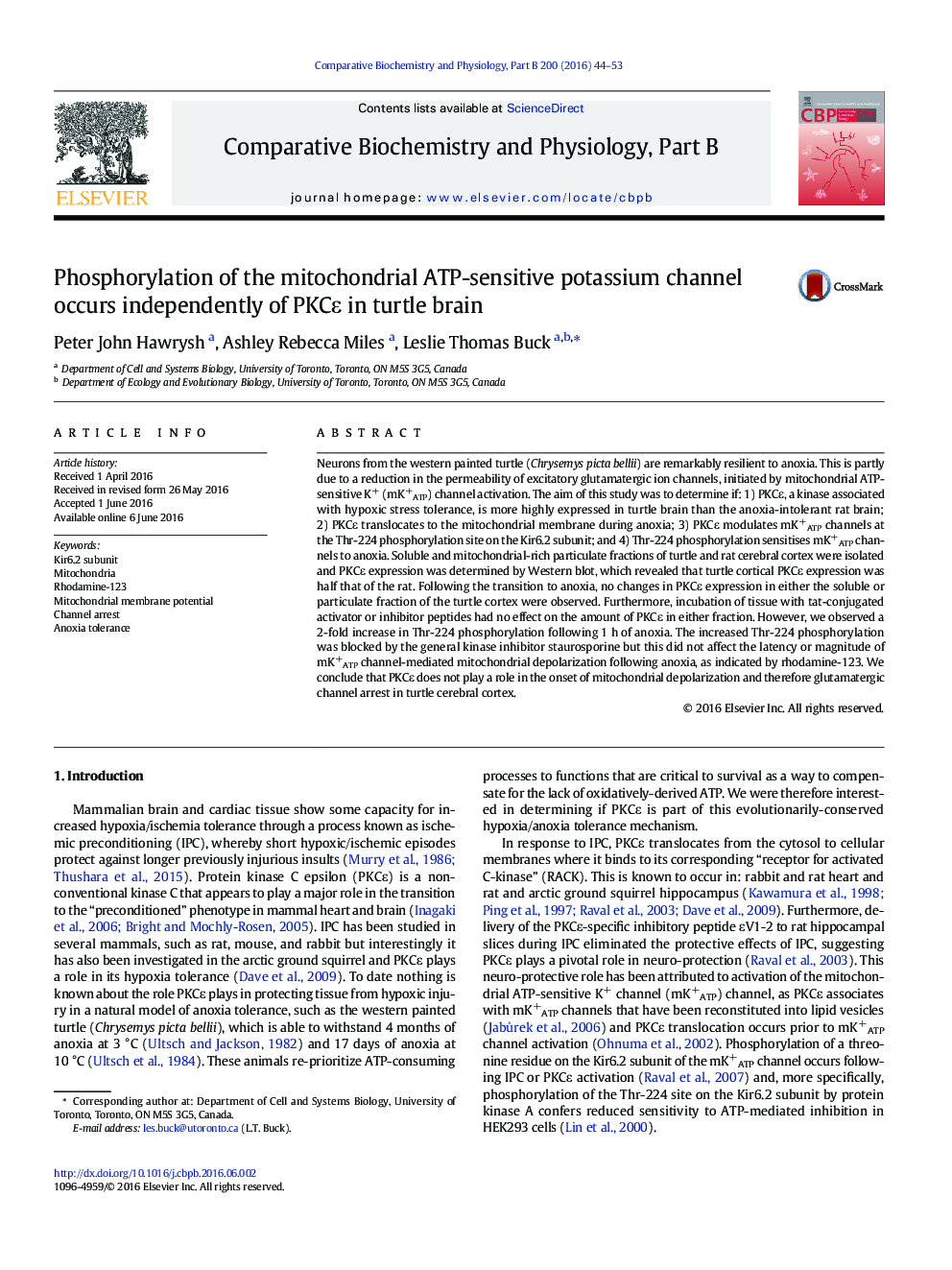| Article ID | Journal | Published Year | Pages | File Type |
|---|---|---|---|---|
| 1974996 | Comparative Biochemistry and Physiology Part B: Biochemistry and Molecular Biology | 2016 | 10 Pages |
Neurons from the western painted turtle (Chrysemys picta bellii) are remarkably resilient to anoxia. This is partly due to a reduction in the permeability of excitatory glutamatergic ion channels, initiated by mitochondrial ATP-sensitive K+ (mK+ATP) channel activation. The aim of this study was to determine if: 1) PKCε, a kinase associated with hypoxic stress tolerance, is more highly expressed in turtle brain than the anoxia-intolerant rat brain; 2) PKCε translocates to the mitochondrial membrane during anoxia; 3) PKCε modulates mK+ATP channels at the Thr-224 phosphorylation site on the Kir6.2 subunit; and 4) Thr-224 phosphorylation sensitises mK+ATP channels to anoxia. Soluble and mitochondrial-rich particulate fractions of turtle and rat cerebral cortex were isolated and PKCε expression was determined by Western blot, which revealed that turtle cortical PKCε expression was half that of the rat. Following the transition to anoxia, no changes in PKCε expression in either the soluble or particulate fraction of the turtle cortex were observed. Furthermore, incubation of tissue with tat-conjugated activator or inhibitor peptides had no effect on the amount of PKCε in either fraction. However, we observed a 2-fold increase in Thr-224 phosphorylation following 1 h of anoxia. The increased Thr-224 phosphorylation was blocked by the general kinase inhibitor staurosporine but this did not affect the latency or magnitude of mK+ATP channel-mediated mitochondrial depolarization following anoxia, as indicated by rhodamine-123. We conclude that PKCε does not play a role in the onset of mitochondrial depolarization and therefore glutamatergic channel arrest in turtle cerebral cortex.
